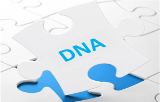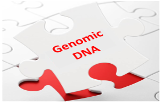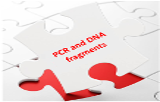Canvax Biotech
 |
||
Canvax is a leading manufacturer and supplier of the most innovative solutions, kits and R&D Reagents inside Molecular Biology fields. Since its foundation in 2001, Canvax offers reliable, cost-effective and easy-to-use innovative tools for research. Based in Córdoba (Spain), since its beginning it has focused on R&D of multiplex high throughput platforms (HTS) for Drug discovery and Diagnostic applied biosensors. Over a decade later, Canvax is a worldwide leading expert in GPCR expression in heterologous cells, with important patents and exclusive know-how. Canvax prides itself to be the first company to get an unprecedented milestone that could revolutionize the Diagnostics sector: Canvax established stable high-level expression of odour GPCRs into heterologous cell lines in 2014. This key milestone, that could be applied in diagnostic, perfume and cosmetic industry, are being employed to obtain a molecular nose, a sensitive and non-invasive diagnostic molecular device for early detection of cancer, as the nose of trained dogs do. Thanks to this project, Canvax was awarded, in 2013, with the largest Public & Private Contract for Pre competitive Technology Development in Spanish history. Website : www.lifescience.canvaxbiotech.com | ||

DNA extraction
Nucleic acid extraction methods are essential to molecular biology and are commonly used in many medical and biological science applications.
Nucleic acid extraction can be divided into 3 steps, which can be optimized according to the type of sample and the downstream applications for which the nucleic acids will be used. These steps are as follows:
1) Rupture of tissue and cell structures
2) Removal of proteins, lipids and other contaminants from nucleic acids
3) Transfer the nucleic acids to water or a buffer solution that will preserve them without interfering with subsequent work.
Nucleic acid extraction methods can be classified into two different types :
- Solution methods (such as the phenol-chloroform method)
- Methods based on the solid phase (such as magnetic beads or centrifugation columns).
Solid-phase extraction methods work by causing nucleic acids to bind to solid supports, such as magnetic beads coated with silica or other materials. The beads (or other supports) are then washed with alcohol to remove contaminants. The support is then washed with a liquid that makes the nucleic acids soluble again, which releases the DNA from the support in a process known as elution. A simple method is to add a solution containing a chaotrope to the crude nucleic acid extract. Chaotropic agents are molecules that disrupt the hydrogen bonding network between water molecules. In the presence of chaotropes, nucleic acids are previously much less soluble and bind to glass, silica-covered magnetic beads and other solid supports - allowing them to be easily separated from contaminants. Solid-phase extraction methods may also depend on selective binding of DNA and RNA to ion exchange resins or other chemicals.




